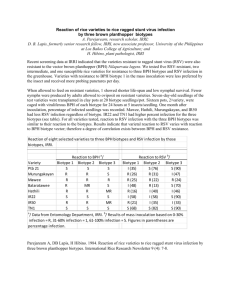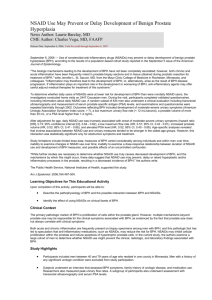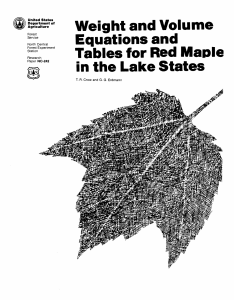IRRN 1992 17 (3) 9-10
advertisement
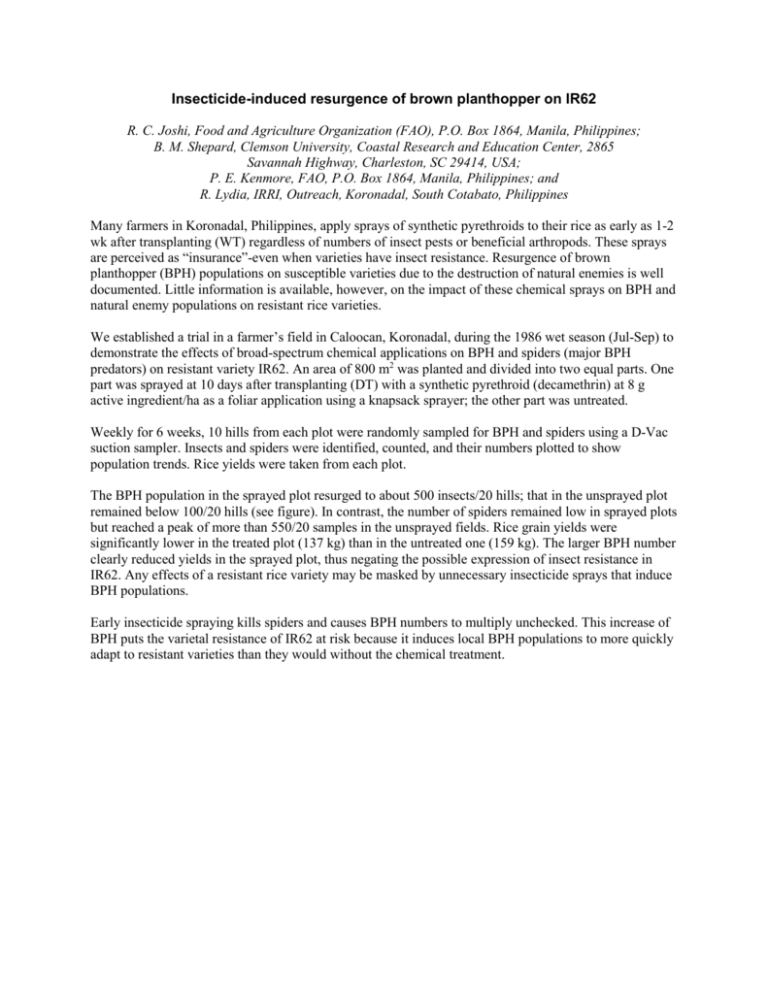
Insecticide-induced resurgence of brown planthopper on IR62 R. C. Joshi, Food and Agriculture Organization (FAO), P.O. Box 1864, Manila, Philippines; B. M. Shepard, Clemson University, Coastal Research and Education Center, 2865 Savannah Highway, Charleston, SC 29414, USA; P. E. Kenmore, FAO, P.O. Box 1864, Manila, Philippines; and R. Lydia, IRRI, Outreach, Koronadal, South Cotabato, Philippines Many farmers in Koronadal, Philippines, apply sprays of synthetic pyrethroids to their rice as early as 1-2 wk after transplanting (WT) regardless of numbers of insect pests or beneficial arthropods. These sprays are perceived as “insurance”-even when varieties have insect resistance. Resurgence of brown planthopper (BPH) populations on susceptible varieties due to the destruction of natural enemies is well documented. Little information is available, however, on the impact of these chemical sprays on BPH and natural enemy populations on resistant rice varieties. We established a trial in a farmer’s field in Caloocan, Koronadal, during the 1986 wet season (Jul-Sep) to demonstrate the effects of broad-spectrum chemical applications on BPH and spiders (major BPH predators) on resistant variety IR62. An area of 800 m2 was planted and divided into two equal parts. One part was sprayed at 10 days after transplanting (DT) with a synthetic pyrethroid (decamethrin) at 8 g active ingredient/ha as a foliar application using a knapsack sprayer; the other part was untreated. Weekly for 6 weeks, 10 hills from each plot were randomly sampled for BPH and spiders using a D-Vac suction sampler. Insects and spiders were identified, counted, and their numbers plotted to show population trends. Rice yields were taken from each plot. The BPH population in the sprayed plot resurged to about 500 insects/20 hills; that in the unsprayed plot remained below 100/20 hills (see figure). In contrast, the number of spiders remained low in sprayed plots but reached a peak of more than 550/20 samples in the unsprayed fields. Rice grain yields were significantly lower in the treated plot (137 kg) than in the untreated one (159 kg). The larger BPH number clearly reduced yields in the sprayed plot, thus negating the possible expression of insect resistance in IR62. Any effects of a resistant rice variety may be masked by unnecessary insecticide sprays that induce BPH populations. Early insecticide spraying kills spiders and causes BPH numbers to multiply unchecked. This increase of BPH puts the varietal resistance of IR62 at risk because it induces local BPH populations to more quickly adapt to resistant varieties than they would without the chemical treatment. Total number of BPH and spiders sampled by D-vac. Caloocan, South Cotabato, Philippines, 1986 wet season. Joshi RC, Shepard BM, Kenmore PE, Lydia R. 1992. Insecticide-induced resurgence of brown planthopper on IR62. International Rice Research Newsletter 17 (3) 9-10.
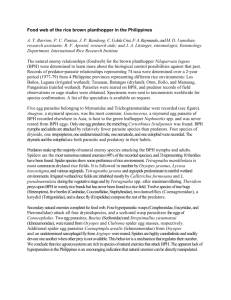
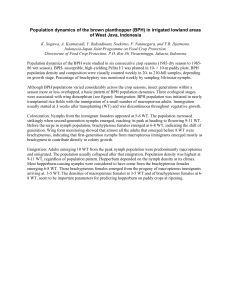
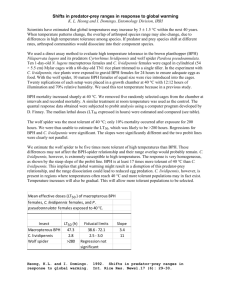

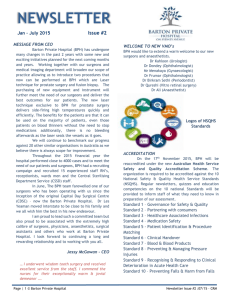
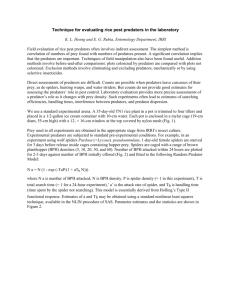
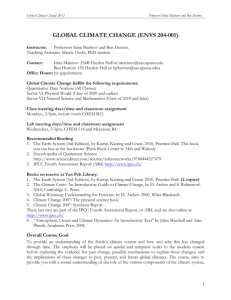
![Bachelor of Pharmacy Curriculum Map -[1]](http://s3.studylib.net/store/data/007319868_1-b09d9aed49d55ed8100126eb07071cb5-300x300.png)
